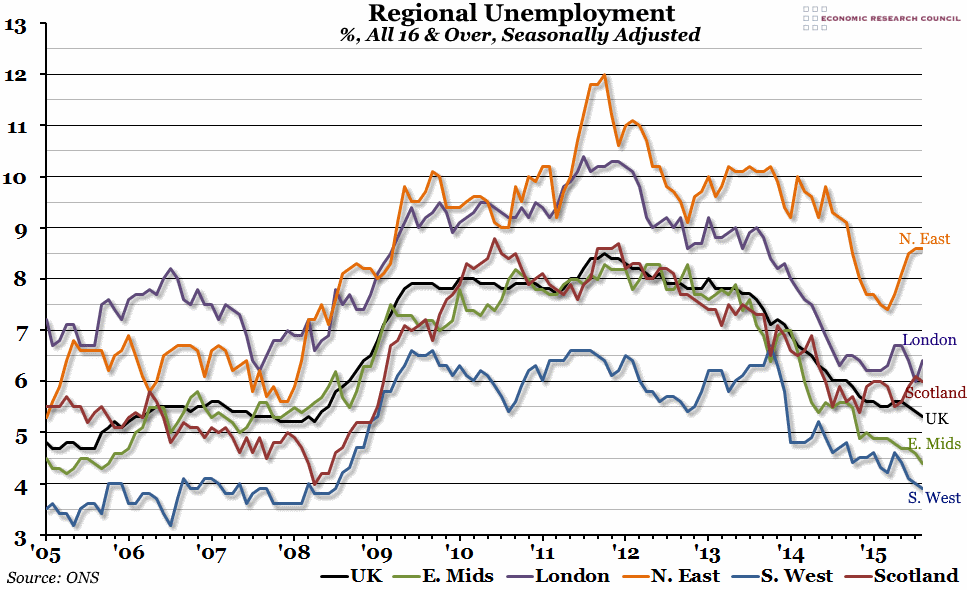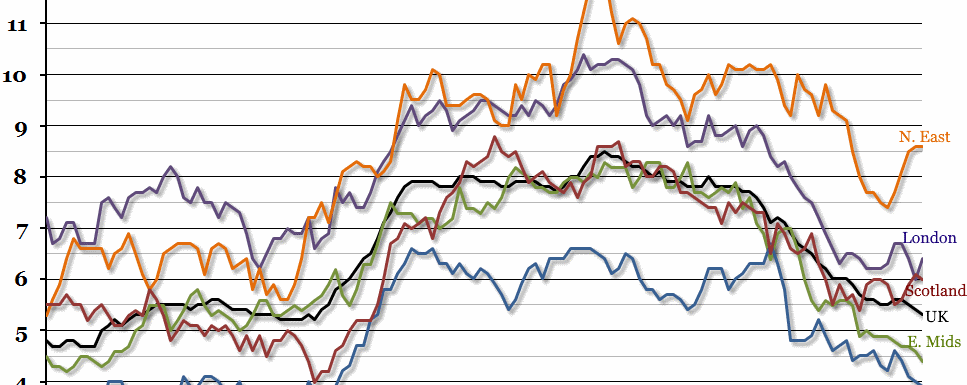
Summary
After a brief stutter last quarter, the UK’s headline unemployment rate continued to fall in the third quarter of the year, to 5.3% (the lowest it has been since the beginning of 2008, when it stayed at 5.2% for around six months). Large regional disparities persist, however, and have got worse in some cases since the start of 2015.
What does the chart show?
The graph shows the quarterly unemployment rate (the percentage of people who do not currently have a job out of everyone who either has a job or is currently looking for one) for everyone aged 16 and over for a variety of regions. The black line represents the headline UK total figure, while each of the coloured lines represents a different area of the country.
Why is the chart interesting?
The UK’s labour market has largely been a success story for the last couple of years, with unemployment falling and the employment rate reaching new records each month (although low pay remains a concern). However, not all regions of the country will be feeling this recovery equally. The North East of England, which was hit particularly hard by the recession, has been experiencing rising unemployment rates since March, after what looked like a strong period of improvement. The unemployment rate there is now back over 8.5%. In London (which has always had traditionally high levels of unemployment compared to the rest of the country), the unemployment rate has oscillated around the same level (6.5%) for the past year. The last few months have seen Scottish unemployment shoot up above 6%, despite largely tracking the UK total since 2010.
It hasn’t all been bad news for the regions, however. Like Scotland, unemployment in the East Midlands had been very close to the headline national figure since well before the crisis hit. But unlike Scotland, unemployment has been falling faster in the East Midlands than in the rest of the country since 2014, and the regional rate there is now less than 4.5% (making it one of the best performing regions of the country). Finally, the South West of England has, in the last few months, overtaken the South East to become the area of the country with the least unemployment (currently 3.9%). That range – 3.9% in the South West to 8.6% in the North East – makes talking about the “UK labour market” as a whole very difficult.

